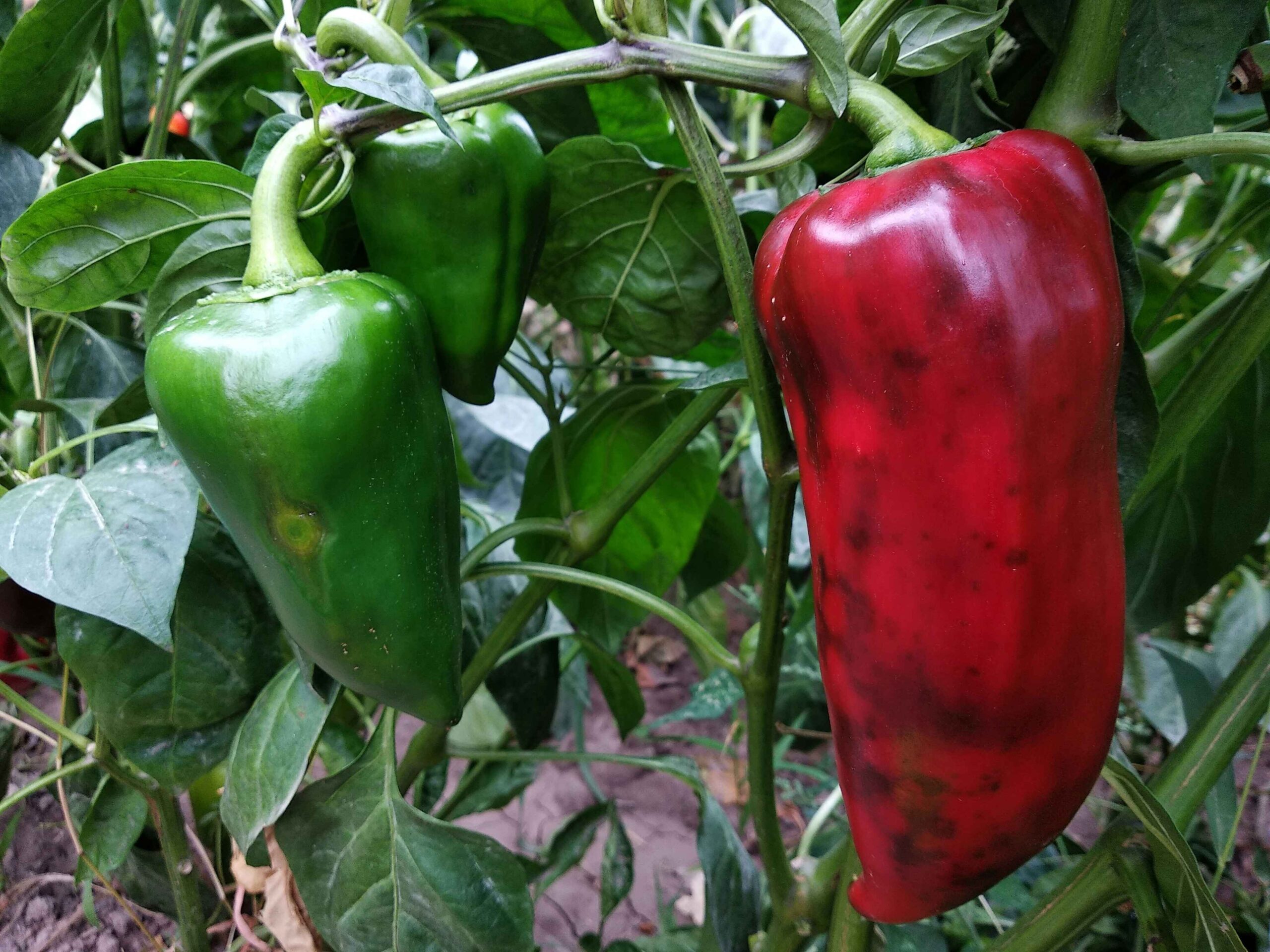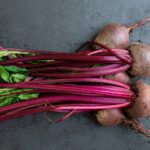Providing the right nutrients is key to growing vibrant and flavorful pepper plants. Fertilizing is essential to ensuring your plants thrive and produce a bountiful harvest. When it comes to fertilization, understanding the nutritional needs of pepper plants is important. These plants, whether you’re growing hot peppers or mild varieties, require specific levels of nourishment to achieve maximum growth. The fertilizer you choose will support their development and encourage them to flourish throughout the growing season.
Also, read my guide on:
How to Grow Biquinho Peppers: From Seed to Table
When applying fertilizer, it’s crucial to consider the pH of your soil. The pH scale, ranging from 0 to 14, measures the acidity or alkalinity of the soil, with neutral being around pH 7. Pepper plants grow best in soil with a pH between 6 and 7. If your soil is too acidic or alkaline, it could affect your plants’ ability to absorb the necessary nutrients. Adjust the pH to meet their ideal conditions to ensure that your peppers get the most out of the fertilizer.
Several types of fertilizers are available, and choosing the right one can often raise questions. Sold in various forms, some fertilizers are designed for general use, while others are formulated specifically for pepper plants. A well-balanced fertilizer can provide the necessary nutrients to support the growth of your plants. Following the practical tips and guidance in this fertilizer guide will give you everything you need to help your pepper plants thrive and yield a satisfying harvest.
Nutritional Needs of Pepper Plants
To ensure pepper plants grow strong and produce a bountiful harvest, they must have a balanced mix of nutrients. These plants require three main macronutrients—nitrogen, phosphorus, and potassium. Nitrogen is essential for vegetative growth and foliage development, while phosphorus supports root growth and flower production. Potassium helps with fruit quality, disease resistance, and water regulation, which are critical for the plant’s overall health.
In addition to these macronutrients, pepper plants need various secondary and micronutrients to thrive. Calcium strengthens the cell walls and prevents issues like blossom-end rot, while magnesium plays a key role in producing chlorophyll, which is necessary for photosynthesis. Sulfur helps in protein synthesis and the proper function of enzymes. Iron, manganese, zinc, copper, boron, and molybdenum are micronutrients that support plants’ optimal growth and development.
When to Fertilize Peppers
To ensure pepper plants thrive and produce a good harvest, applying the right fertilizer at the right time is important. Experts recommend broadcasting a general fertilizer or compost into the soil during pre-planting to help the plants start. You can apply 30 per cent of the total amount of fertilizer before planting. This gives the plants a solid foundation to grow, stimulating strong stem and foliage development. After planting, add less nitrogen-rich fertilizer, especially if you want to encourage vegetative growth.
For the best results, add fertilizer every few weeks after the plants are established. About 45 per cent of the total fertilizer can be applied during the growing season, just before fruit development begins. Final applications, which should account for the remaining 25 per cent, should be made once the fruits ripen. This ensures that the plants continue to get the nutrients they need to support their fruits and finish growing. This feeding method helps create strong plants that produce a big and bountiful harvest.
Best Fertilizers for Pepper Plants
Choosing the right fertilizer is important to get the best results for your pepper plants. Start by having your soil tested to determine its nutrient content. If your soil is lacking, consider adding compost or amendments to improve the quality. For balanced nutrition, select a fertilizer mix of nitrogen and phosphorus. However, if your soil already has high phosphorus levels, choose a low or no-phosphorus option to avoid excess.
The right fertilizer will encourage healthy root development and stimulate growth throughout the season, especially when applied right during planting and after. A well-chosen vegetable bed fertilizer will give your pepper plants the nutrients they need to thrive.
Organic Fertilizers for pepper plants
Compost and Organic Matter
Using compost and organic matter for your pepper plants is a great way to boost soil health and structure. These materials help enhance soil fertility, promote moisture retention, and provide beneficial microorganisms that help your plants thrive. They also supply a steady source of nutrients to encourage healthy growth.
Bone Meal
Bone meal is a great option for providing phosphorus that supports root development and promotes better flowering. This natural source of nutrients is especially beneficial for plants that need strong root systems to support vibrant growth.
Fish Emulsion
Fish emulsion is an excellent source of nitrogen and potassium, which are key for plant growth and fruit production. It promotes strong stems and rich foliage, ensuring your pepper plants grow vigorously and produce a bountiful harvest.
Epsom Salt
Epsom salt is an effective organic fertilizer for correcting magnesium and sulfur deficiencies. It helps with chlorophyll production, which is essential for healthy growth and the overall vitality of your pepper plants. This allows plants to stay strong and green throughout the growing season.
Synthetic Fertilizers for pepper plants
You can choose from various balanced formulations with specific N-P-K ratios when using synthetic fertilizers for pepper plants. A 10-10-10 or 20-20-20 formula works well for general growth, providing a balanced mix of nitrogen, phosphorus, and potassium that supports overall plant health. These fertilizers are quick and readily available, making them convenient for feeding your plants throughout the growing season.
Consider using high-phosphorus or high-potassium blends like 5-10-5 or 10-20-10 for flowering and fruiting. These formulas help to encourage better fruit quality and promote healthy blossoms. Choosing the right fertilizer based on your pepper plants’ specific growth needs is important to achieve the best results in your garden.
Tips for Using fertilizer for pepper plants
Avoid Over-Fertilization
When fertilizing pepper plants, avoiding over-fertilization is important, as it can lead to nutrient imbalances and poor fruit quality. Following recommended application rates ensures that your plants get the nutrients they need without causing damage. Over-fertilizing can result in nutrient burn, affecting the root zone and even harming your plants. To prevent this, consistently water your plants after applying fertilizer to help the nutrients soak into the soil properly.
Use Mulch
Mulching with organic mulch around the base of your plants helps conserve moisture, regulate soil temperature, and suppress weeds. This technique can also improve the overall health of your plants, giving them better access to nutrients. Another important tip is to monitor the health of your pepper plants regularly. Look for signs of deficiencies, like yellowing leaves (a sign of nitrogen or phosphorus deficiency) or blossom-end rot (indicating a calcium issue). If you notice these signs, you may need to adjust your fertilization regimen to ensure proper growth.
Foliar Feeding
Consider using a diluted liquid fertilizer for foliar feeding to give your plants a quick nutrient boost. This method allows the plants to absorb nutrients through their leaves, especially during critical growth stages. By carefully following these fertilizer tips and regularly inspecting your plants, you can ensure they stay healthy and productive throughout the growing season.
Final Observation
Proper fertilization is crucial for growing healthy and productive pepper plants. You can ensure your peppers thrive throughout the season by choosing the right fertilizer, applying it at the right time, and following key care tips like mulching and monitoring plant health. Whether you prefer organic or synthetic options, the right approach will help you achieve a bountiful harvest and enjoy vibrant, flavorful peppers all season.
FAQs
Q- What is the best fertilizer for pepper plants?
A balanced fertilizer with equal amounts of nitrogen, phosphorus, and potassium (10-10-10 or 20-20-20) is ideal. Consider a high-phosphorus or high-potassium formula if your plants are flowering or fruiting.
Q- How to make peppers grow faster?
To help peppers grow faster, ensure they receive plenty of sunlight, water them consistently, and apply the right fertilizer for optimal nutrient intake. Also, mulching should be used to retain moisture and regulate temperature.
Q- How often should I feed pepper plants?
Feed pepper plants every 2-3 weeks during the growing season with a balanced fertilizer. Adjust based on their growth stage—more nitrogen during early growth and phosphorus or potassium during flowering and fruiting.
Q- How to make homemade fertilizer for peppers?
You can make homemade fertilizer using compost, fish emulsion, or banana peels. Mixing organic matter like kitchen scraps into your soil also provides long-term nutrients.
Q- What is the best homemade fertilizer?
The best homemade fertilizer includes compost, bone meal, coffee grounds, and fish emulsion, supplying essential nutrients like nitrogen, phosphorus, and potassium.
Q- How do you use banana peels as fertilizer?
To use banana peels as fertilizer, chop them up and bury them in the soil near the roots of your pepper plants. The peels are rich in potassium and phosphorus, helping promote flowering and fruiting.










